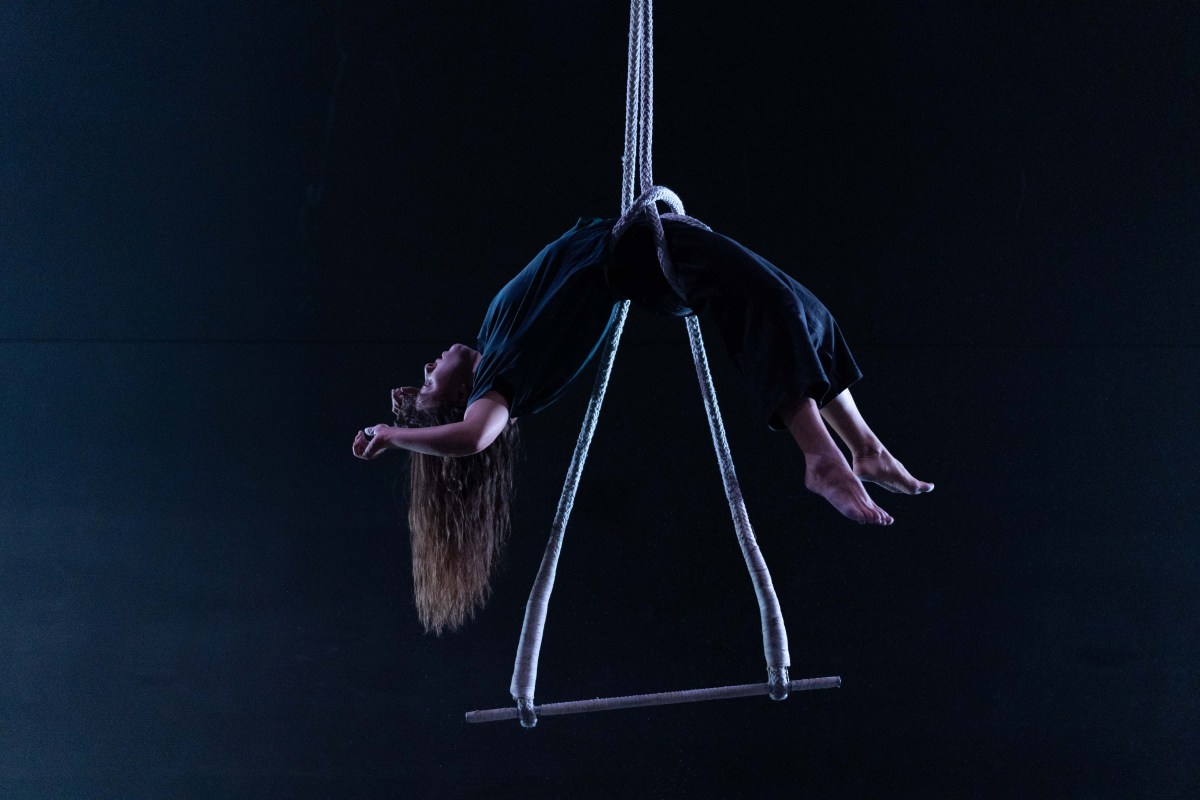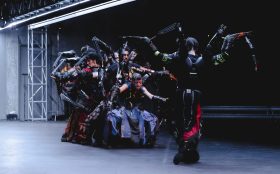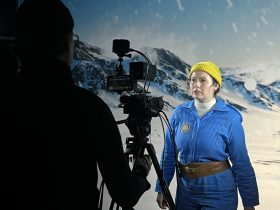Break is a new work created by Gold Coast-based dance company The Farm, together with performer, Cecilia Martin. It is a personal exploration of how we define ourselves, what happens when we fall apart and how we can recover when our dreams and ambitions are shattered, based on the life experiences and creative work of Martin.
This one-woman, autobiographical show features Martin, who trained as a circus performer and aerialist. She worked extensively with Circa for five years, travelling the world as a professional acrobat, before a series of accidents stopped her high-flying career in its tracks. Martin says: ‘Break began as a tale of the body, after multiple wrist injuries halted my career as a professional acrobat and led me to question the very thing that had built my sickness: my ambition. I realised that the same drive that had allowed me to fly was also breaking me.’
She describes her journey and the recovery process with Gavin Webber, one of the Artistic Directors from The Farm, and collaborator and director Kate Harman. The trio examined how people, and artists in particular, push themselves to the limits and questioned the nature of burnout.
As co-directors, Webber and Harman have jointly crafted a well thought-through narrative in a 60-minute show that swings between acrobatic demonstrations and spoken text by Martin about her journey. Fast-paced and dramatic in equal measure, it also has moments of solitude and sadness. Creating an interesting story arc, the work includes detailed explanations of how acrobats and aerialists work and hone their craft. This was assisted by drawing on four audience members at random to help demonstrate many aspects of acrobatics with fascinating revelations about breathing and being supported or supporting colleagues with your own body.
A description of pyramids and flyers (the person at the top of the pyramid), and how body weight and distribution works, helps to point out the impressive technical skills of the acrobat. It was after one such pyramid, when her belt failed to engage properly, that she suffered a second broken wrist.
Martin gives an extraordinary performance that is physically energetic but beautifully nuanced, moving easily from one section to the next with a number of quick costume changes and the use of props. She is also a consummate actor, with a genuine ability to engage and hold the attention of an audience, offering a self-deprecating but tongue-in-cheek sense of humour. She demonstrates moments of sadness, some anger and reflection about her circus accidents. Yet, despite this genuine sorrow – for example, after playing a poignant and favourite song on guitar – she never descends into maudlin self-pity.
Early in her engagement with the audience she states that circus has always been her life, shared with other artists, explains how she is now alone doing a monologue and asks the question, ‘Who wants to listen to an acrobat?’ Immediately, she has the audience on side as, after all, we are there to hear and watch her story.
There are some marvellous scenes too that demonstrate her continuing skills. Skipping immensely fast and speaking at the same time shows great breath control. Spinning a series of plates on long poles is a standard trick and is well-managed, until she deliberately drops and smashes one to show her frailty. A final scene sees her demonstrating aerial work on a swing that is quite beautiful and seems to offer her own physical love letter to circus and her craft.
The atmospheric lighting from Briana Clark adds greatly to the visual design of Rozina Suliman. Composers and sound designers, Anna Whitaker and Ben Ely, create a score of mostly percussive, electronic music that well-supports Martin’s performance. Additionally, a soundscape of background noises relevant to the narrative enhances the work.
This is a brave and brilliantly executed work that examines the wider issue of the nature of humanity and how we define ourselves. Martin’s ambition in creating Break was to ask people to look into themselves and examine what it takes to rebuild lives when things get tough or do not go to plan. It also strongly reflects on our need for human contact and each other, which is fundamental to the connection for Martin of working within an acrobatic ensemble.
Read: Opera review: Aida, Sydney Opera House
This need is demonstrated in the final staged moments of her work. Martin reaches out to the strangers in the audience, those she has met when she bringing them onto the stage, in a gesture of ensemble collaboration. A fitting end to Break.
Break
Presented by Metro Arts and commissioned by HOTA and Metro Arts
Metro Arts, West Village, West End, Brisbane
By The Farm and Cecilia Martin
Created by: Cecilia Martin, Kate Harman and Gavin Webber
Performed by: Cecilia Martin
Direction: Gavin Webber and Kate Harman
Lighting Design: Chloe Ogilvie
Composers and Sound Design: Ben Ely and Anna Whitaker
Visual Design: Rozina Suliman
Break will be performed until 24 June 2023.





